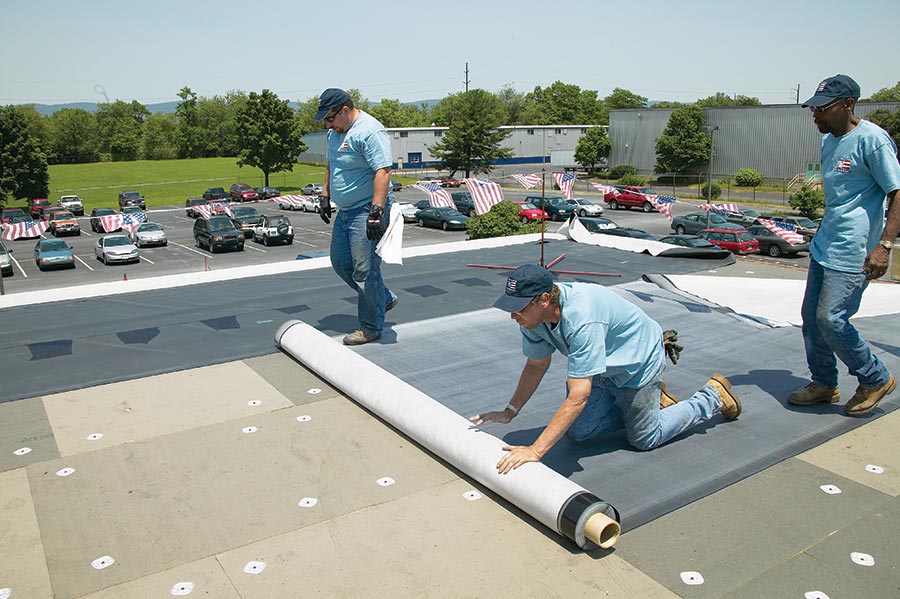Built-up roofs (BUR) have long been a popular choice for commercial buildings due to their durability and longevity. However, over time, even the most robust roofing systems may require repairs to maintain their integrity and extend their lifespan. In this article, we will delve into the importance of built up roof repair and explore the various repair methods available to restore the functionality and effectiveness of your commercial roofing system.

Understanding the Need for Built-Up Roof Repair:
As with any roofing system, built-up roofs are exposed to the elements and can develop issues over time. Factors such as weathering, foot traffic, UV exposure, and temperature fluctuations can contribute to the deterioration of the roof membrane, insulation, or flashing. Recognizing the signs of damage and addressing them promptly through repair is crucial to prevent further deterioration and potential structural issues.
Common Issues Requiring Built-Up Roof Repair:
Leaks and Moisture Intrusion: One of the most common problems in built-up roofs is leaks and moisture intrusion. Prolonged exposure to water can compromise the roof’s integrity, leading to mold growth, insulation damage, and structural issues. Identifying the source of leaks and repairing them promptly is vital to prevent costly water damage.
Blisters and Cracks: Over time, built-up roofs can develop blisters and cracks due to age, weathering, or inadequate installation. Blisters occur when pockets of trapped moisture cause the roof layers to separate, while cracks can occur due to thermal expansion and contraction. Both issues can weaken the roof’s protective barrier and require immediate repair to prevent further damage.
Ponding Water: Built-up roofs can experience ponding water, where water accumulates and does not drain properly. Ponding water can lead to roof membrane deterioration, increased weight load, and eventual leaks. Repairing the roof’s slope or addressing drainage issues is essential to prevent further ponding and potential structural damage.
Methods for Built-Up Roof Repair:
Patching and Resurfacing: For localized damage, patching is often used to repair punctures, small cracks, or blisters. It involves removing the damaged area and applying new layers of roofing materials to restore the waterproofing integrity. Resurfacing, on the other hand, involves applying a new layer of bitumen or asphalt over the existing roof to seal and protect the surface.
Roof Coatings: Roof coatings provide an effective method for extending the lifespan of a built-up roof and addressing minor issues. They act as a protective barrier, enhancing waterproofing, UV resistance, and reflectivity. Roof coatings can be applied directly over the existing roof membrane, providing a cost-effective solution for repair and maintenance.
Complete Roof Replacement: In cases where the built-up roof has extensive damage, severe deterioration, or has reached the end of its lifespan, a complete roof replacement may be necessary. A professional roofing contractor will assess the condition of the roof and determine if replacement is the most viable and cost-effective solution for long-term roof performance.
Conclusion:
Built up roof repair is essential for maintaining the integrity and longevity of your commercial roofing system. Whether it’s addressing leaks, blisters, cracks, or ponding water, timely repairs can prevent further damage and extend the life of your roof. Consult with a professional roofing contractor experienced in built-up roof repair to assess the condition of your roof and recommend the most suitable repair method. By investing in proper maintenance and repair, you can ensure the continued protection and functionality of your commercial building.



Leave a Reply